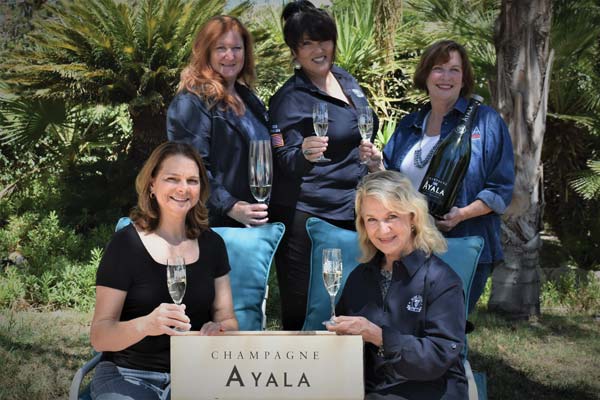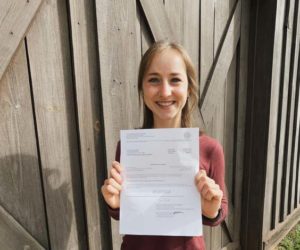Yes, it’s a real thing!
“It’s a real thing! Honestly!” I have said countless times to those in disbelief when I explain I am part of the U.S. Tasting Team and must taste wine daily to practice. The International Blind Wine Tasting Challenge is sponsored by the French wine magazine, Le Revue du Vin de France, with Philippe De Cantenac as the organizer. In his view, “As a winemaker, you have to know by heart all the qualities and faults of the wines . . . and see how winemakers work around the world. So this is culture and experience making you a better taster.”

Twelve wines served in unmarked carafes are poured to contestants. Each team of four tasters has 10 minutes to name the primary grape, country of origin, the region of origin, the producer, and the vintage year of the wine. The wines can be from anywhere in the world! There were 34 teams competing in Champagne, France, in October, 2022.
Team USA is comprised of all women, and two of them are amateur winemakers in the Los Angeles, California, area, as well as amateur wine competition judges for Cellarmasters of Los Angeles. I recruited Annette Solomon last year as a judge and now as a teammate; she is best known for her winemaking in Oregon’s Willamette Valley. I make Spanish varietals from Lodi, California.
As amateur winemakers, we taste our wines throughout the process from grapes at harvest through bottling. Winemakers can identify the basics of body, acid, alcohol, tannin, and malolactic fermentation (MLF). We critique our own wines; so it came to us naturally to dissect commercial wines. Using the traditional markers of each grape variety, we try to eliminate wines before we include them. Coach Lisa Stoll will ask us, “Is it aromatic? Or non-aromatic?” If it is non-aromatic, the team can throw out non-aromatic white wine varietals.
Winemakers can identify the basics of body, acid, alcohol, tannin, and malolactic fermentation (MLF).
Next, we discuss acid. High acid leads us to include grapes like Chenin Blanc, Pinot Gris, Garganega, or Grüner Veltliner. As winemakers, we also recognize additives — especially when used to create the wine’s foundation — like acid. Our best clue for grape identification is the feeling of acid and modified acid can lead us to New World winemaking.
Let me run everyone through one example of how we make our deduction . . . We recently tasted a Chardonnay that was so manipulated, we were confused for the first few minutes; all we could identify for aroma was white powder. Old World vs. New World winemaking is about regional wine styles as much as climate contribution. When the powder aroma blew off the Chardonnay, the aromas of ripe tropical fruit, butterscotch, vanilla, cottage cheese, and alcohol came through. Annette and I can recognize MLF components and the cottage cheese aroma confirmed MLF had occurred.
Once we decided the wine was from the New World, we needed to decide on a country. South Africa is not known for Chardonnay, nor is Argentina. Australia has surprising Chardonnays, but theirs are usually cool coastal and retain acid. Chile’s Chardonnay retains acid because of altitude and coastal diurnal shift. We were left with New Zealand and California. The North Island has two regions known for Chardonnay that generally use French oak. The butterscotch and vanilla traits were from American oak. This is where winemaking style for the region is the deciding factor for California Chardonnay. Turned out the wine was from a famous California wine producer.
We listen to the grape and the traits it presents. Will we win? At this time, it’s to be determined, but I believe we have the advantage, based on our unique experience as amateur winemakers.






